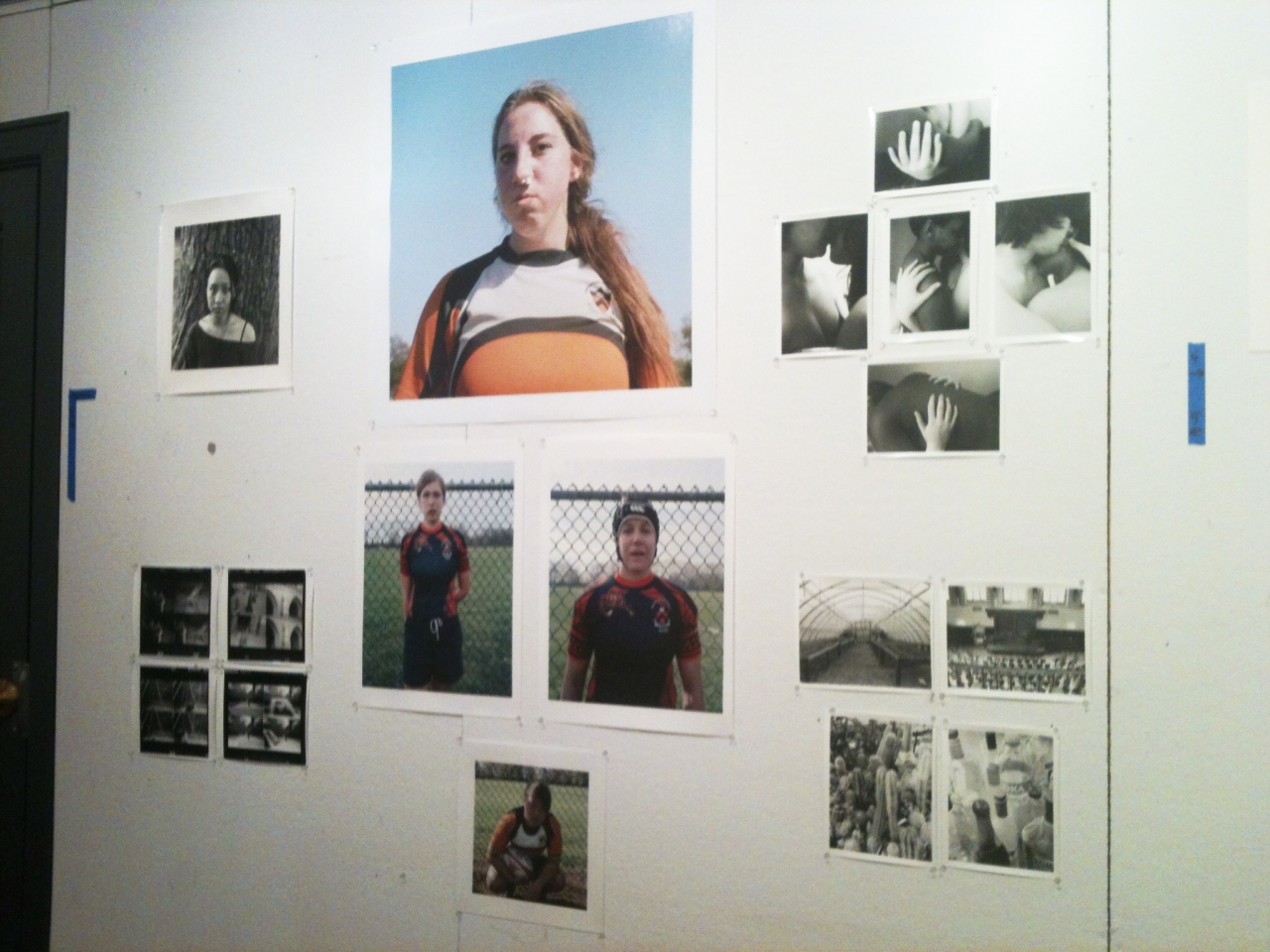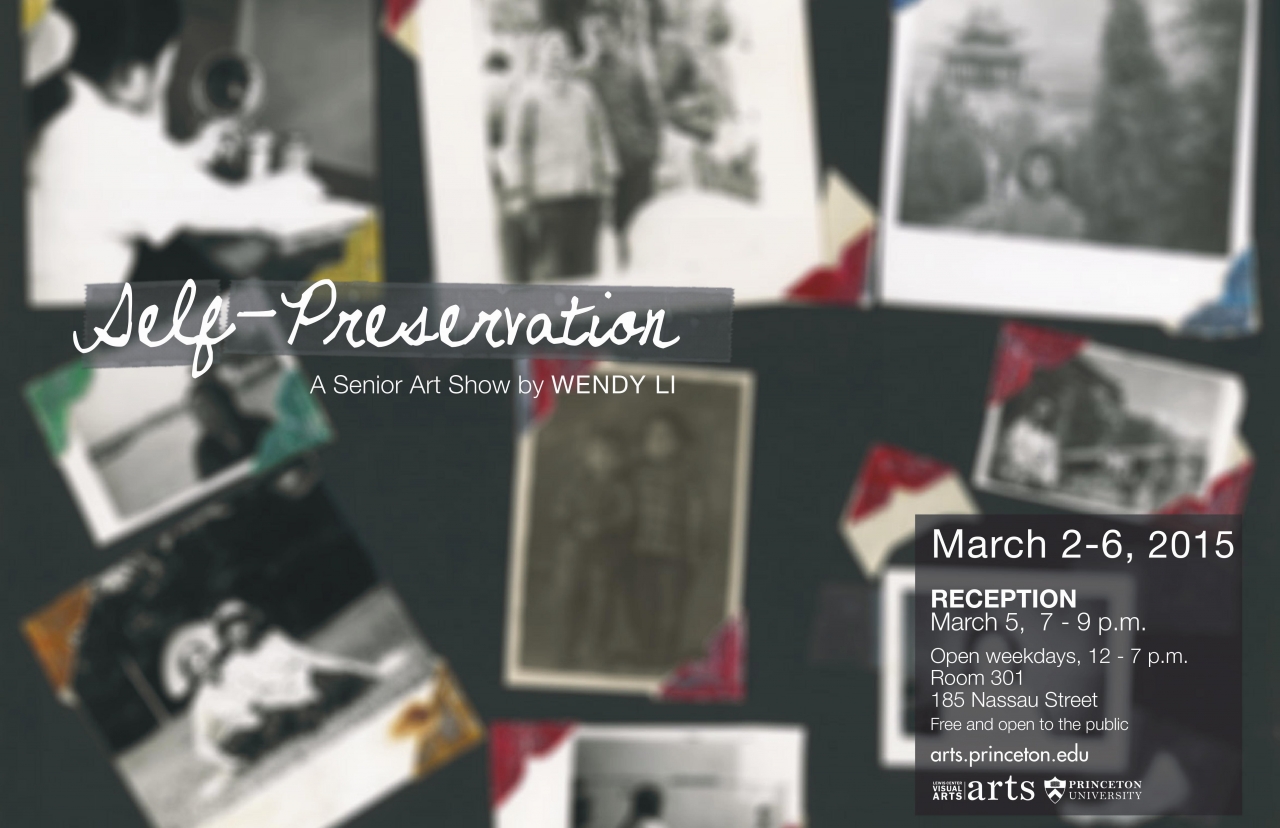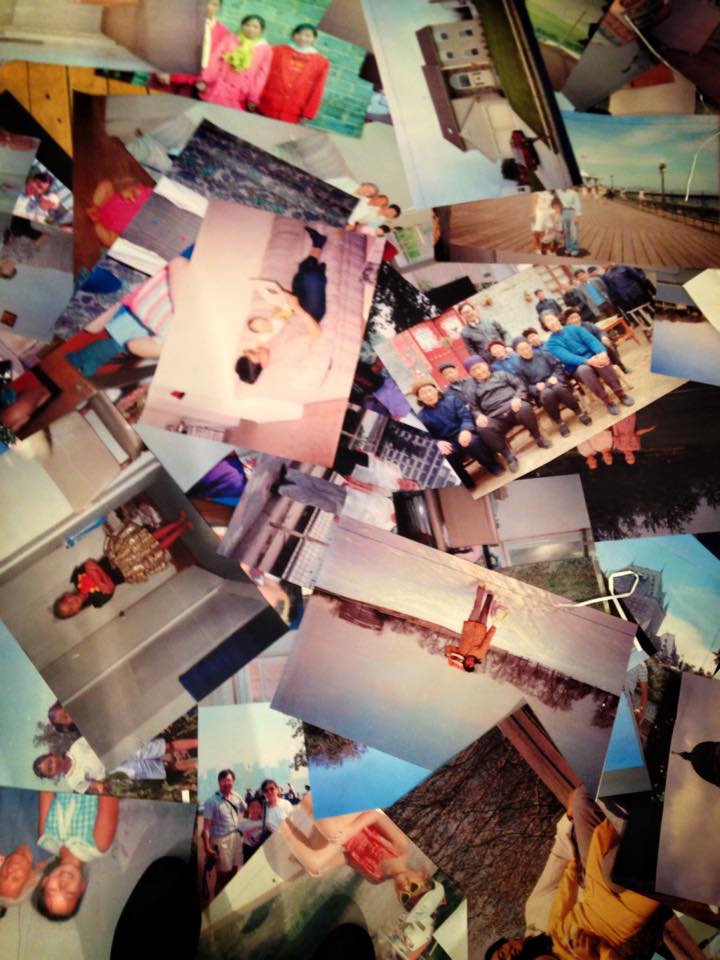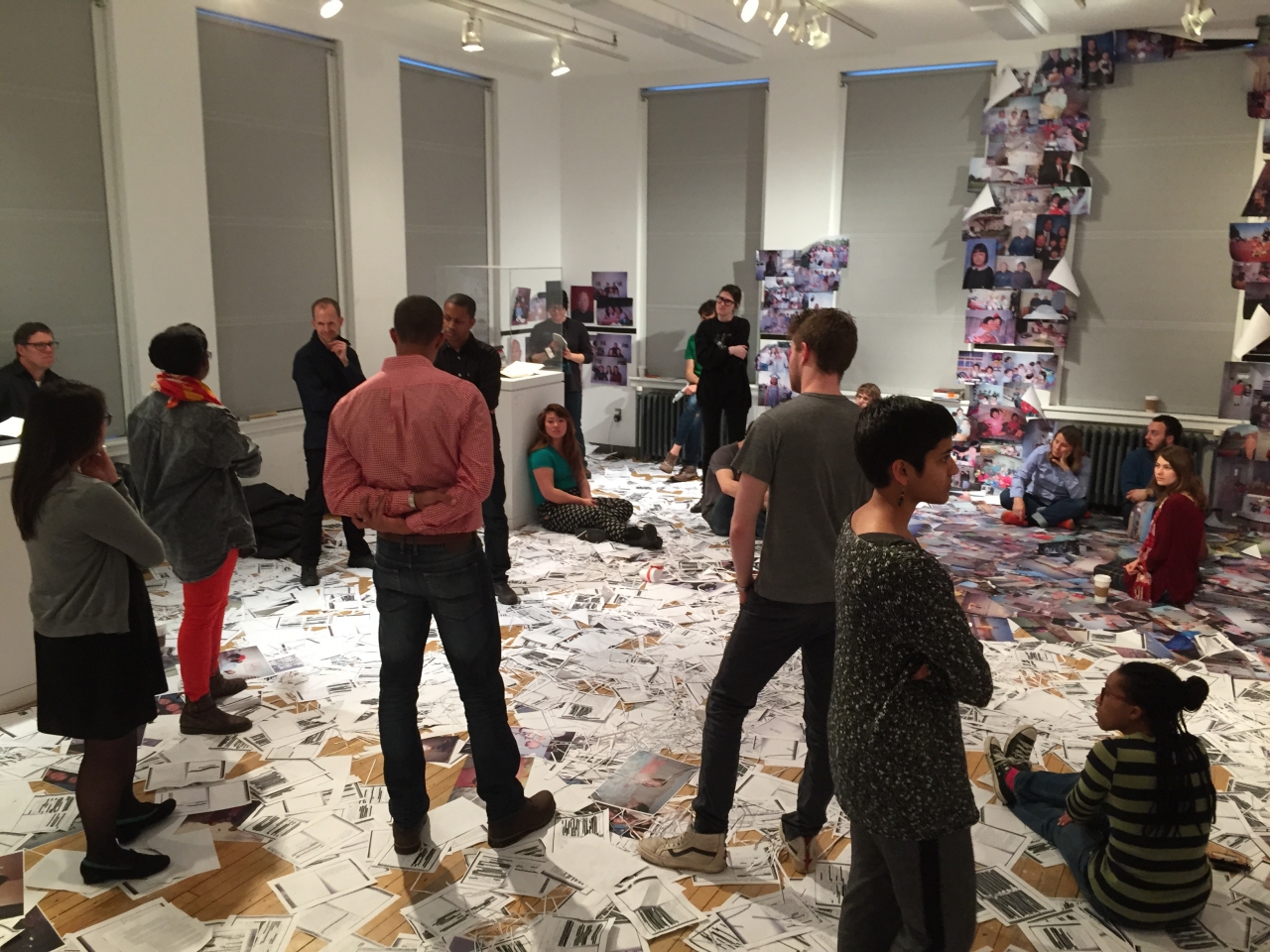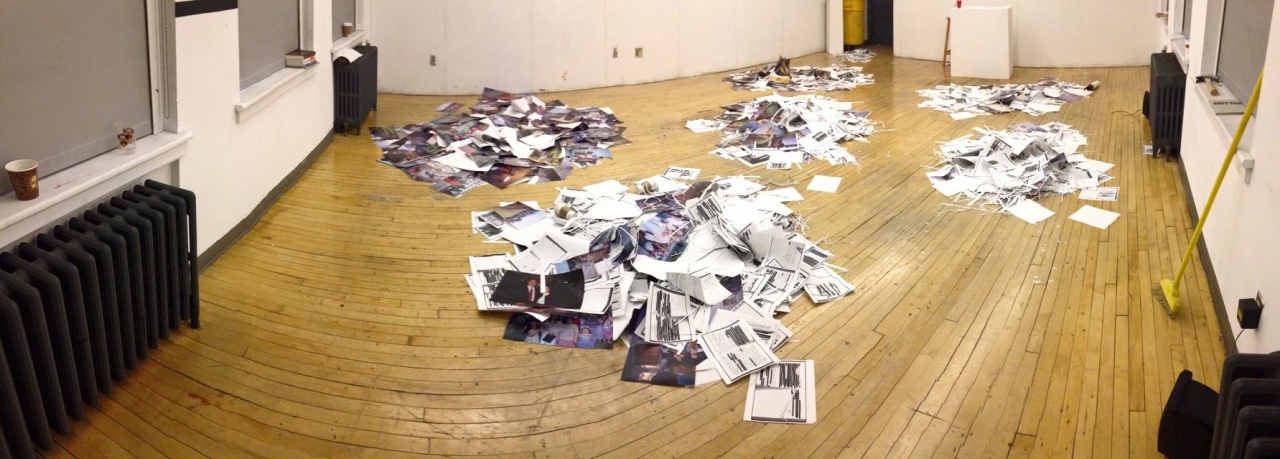I took my first VIS (the departmental code for Visual Arts) class in the spring of my freshman year. And as I fell into the rhythm of Princeton life and the trees bloomed, so did my love for photography. I used my camera to understand Princeton and the people around me. Photography became a mode of analysis and a tool for personal connection. Throughout the semester, I grew to value the relationship between me and my instructors, who would painstakingly fuss over a print with me to achieve just the right tone or exposure. I realized how invested the faculty and staff of the Lewis Center are, and how much I wanted to invest just as much in my art.
Take a look at your work and pick a few pieces to submit in your portfolio. Hang them up or display them, if you can. Burn them on a CD, perform them, whatever your preferred mode of exhibition is.
[caption]My actual VIS application![/caption]
As I applied for the VIS program in the spring of my sophomore spring, I knew that whatever the status of my application, I would keep taking VIS classes at Princeton. But I wanted desperately to be in the program. I wanted access to my own studio space, I wanted funding for my expensive materials, and most important, I wanted the tight-knit, diverse community that the VIS program provides. Despite signing on to what would essentially become a double-major with double independent work, I knew it would be worth it.
3-4. Take a bunch of classes; make art (in no specific order)
Move into your own studio. Take a few studio classes. Hang out with a bunch of artists for three hours once a week and have it count as a class. Make new friends. Take a couple of art history classes. Spend large amounts of time at 185 Nassau St., where the studios are located, and let it become your new home.
[caption]Moving into my studio. It did not stay this clean for long.[/caption]
I remember the first time I saw (or rather, made) my studio. I had just come back from a semester abroad. I punched in the exclusive code for the 4th floor of the Lewis Center for the Arts, and as the elevator doors opened, I was suddenly immersed in a new, foreign world. In just a few square meters, I found paint, dismembered mannequins, a trampoline, a turntable and a dollhouse. I pulled together a few portable walls and made myself a new studio space. I filled this area with everything I found interesting—books, photographs, postcards, magazines, the list goes on. Ever since, I've grown to love the Lewis Center and treat it as a home. My most absurd and most poignant thoughts have come to me in that building. I've met close friends and learned about life-changing worlds and ideas. I became a photographer, a sculptor, a designer, a feminist, an activist, a writer and an artist in that building.
5. Make a thesis
Translate your thoughts into something that roughly resembles a visual arts show. Put it together. Publicize it.
[caption]The poster for my thesis show.[/caption]
[caption](The final installation)[/caption]
[caption]A shot of the floor.[/caption]
I'm not sure how long it took me to put my thesis show together. The straightforward answer would be that it took me a month to install it. I started intentionally working on it about nine months ago, as I applied for (and received) senior thesis funding to go to China. But in reality, my thesis took my entire life, and generations of lives before that, to put together. My senior thesis, "Self-Preservation," explored my family history through photographs and written documents. I collected more than 1,000 photographs and nearly 100 years of written documents and put it all in a room. I met with my advisers, who are critically acclaimed, world-renowned artists, through the entire process. I doubted myself and found inspiration. I showed my work to my peers and watched it get torn apart, analyzed, praised and appreciated.
6. Let people see it
Display your work. Invite some people you know (and don't know) to pick apart everything you've created, in what is commonly called a critique. Have the Lewis Center pay for some catering and invite everyone you know to come see your work during a reception.
[caption]Right before the critique begins...[/caption]
After opening my "baby" for the world to see, I subjected myself to one of the scariest parts of being an artist—the critique. As VIS faculty, students and friends gathered to discuss my work for one hour, I heard from others about what they saw in my work. The discussion weaved around everything from philosophy, to communism, to teenage angst and gossip. But beyond hearing both praise and criticism, I came out of the critique with a distinct sense of fulfillment. I was struck by how it felt to have my artwork be treated and discussed as a real piece of art. Over the course of the week, everyone from art historians to small children came to see the show. It gave me a distinct sense of dignity and pride that others could see my work and lend it such legitimacy.
7. Deinstall
Take everything down.
[caption]It's easier to sweep away 100 years of history than you think[/caption]
[caption]The end.[/caption]
The day after my show closed, I was faced with a peculiar situation. It had taken me months to create my show, and an entire month to install it. In less than two hours, I had cleaned and emptied the room, and 100 years of personal history sat in the recycling bin. As I sweeped the paper up, I weaved in and out of emotion, contemplation, and apathy. I thought about everything I had learned since I had started my thesis. I found a photograph of my grandfather and saw what he looked like, for the first time. I read my other grandfather's memoir and learned about his life from 1921 to present. I discovered new moments in my parents' lives. I read through my old journals and remembered the names and places I had forgotten over time. As I installed the show, I thought eagerly about life post-thesis and the relief I would feel to be done, but in de-installing, I realized just how much I had invested in this project, and how bizarre it felt to take it all down. As I cleared every shred of paper out of the room and turned off the lights, I felt an absence that I knew would be filled by my next project.
